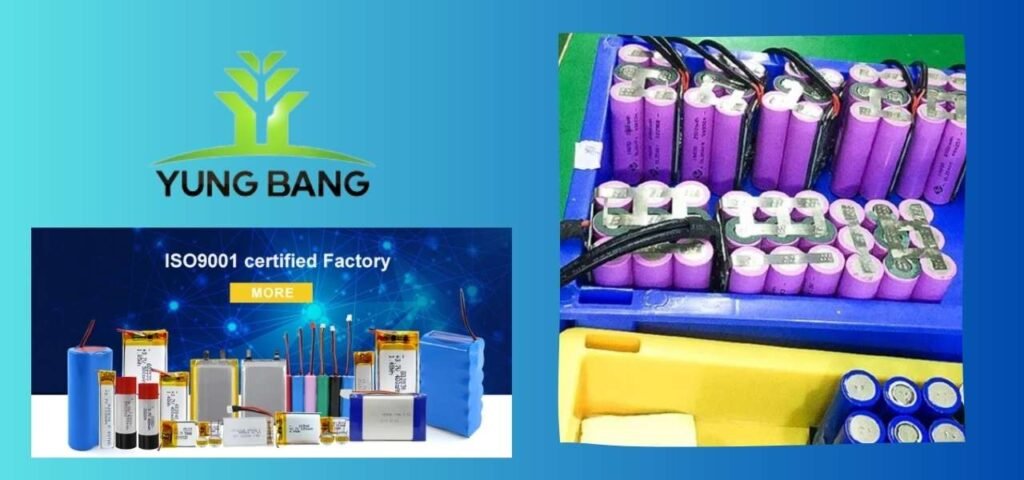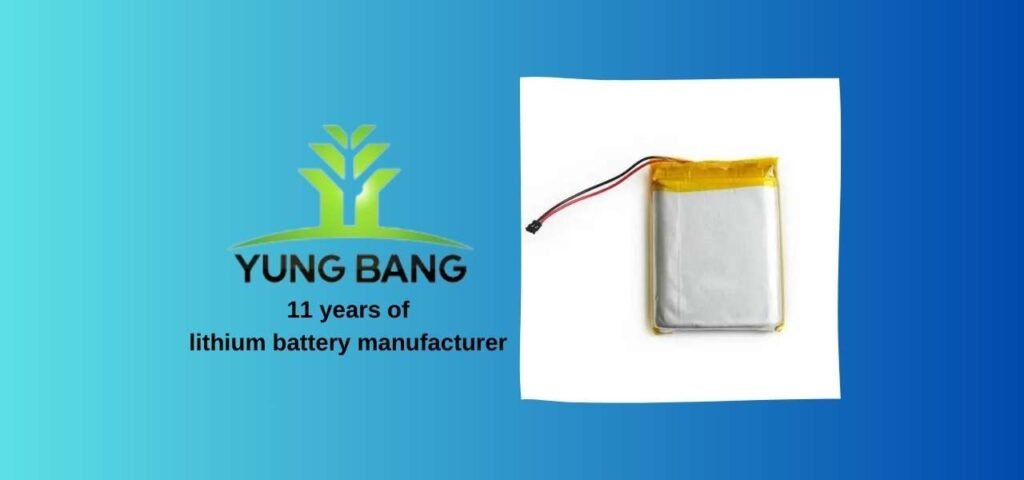Lithium Polymer (Li-Poly or LiPo) batteries have become one of the most widely used rechargeable battery types in modern technology. From powering drones, smartphones, and laptops to providing energy for electric vehicles, Li-Poly batteries offer a compelling combination of high energy density, lightweight design, and versatility. However, with this powerful technology comes a need for proper handling and understanding of its characteristics.
In this guide, we’ll cover everything you need to know about Lithium Polymer batteries, including how they work, their advantages and disadvantages, safety concerns, and best practices for using them effectively.

What is a Lithium Polymer (Li-Poly) Battery?
A Lithium Polymer (Li-Poly) battery is a type of rechargeable battery that uses a polymer electrolyte instead of the liquid electrolyte found in traditional lithium-ion batteries. The electrolyte in Li-Poly batteries is typically a gel-like substance, which enables a more flexible and lightweight design.
Li-Poly batteries are technically a subtype of lithium-ion batteries, but they differ in how they are constructed. The use of a polymer electrolyte allows manufacturers to create batteries in a wide range of shapes and sizes, making them ideal for applications where space and weight are critical concerns.
How Does a Li-Poly Battery Work?
Like all lithium-based batteries, Li-Poly batteries store and release energy through the movement of lithium ions between two electrodes: the anode (negative electrode) and the cathode (positive electrode). A separator and the polymer electrolyte allow the ions to flow between these two electrodes during charging and discharging cycles.
Charging Process:
During charging, lithium ions move from the cathode to the anode, where they are stored. The anode, typically made of graphite, acts as a medium to store the lithium ions until they are needed.
Discharging Process:
When the battery is in use, these lithium ions move back from the anode to the cathode, releasing stored energy and allowing the device to function. This process generates an electrical current that powers the connected device.
Advantages of Lithium Polymer (Li-Poly) Batteries
Li-Poly batteries offer several advantages that make them a popular choice for various applications. Here’s a closer look at some of the most notable benefits:
1. Lightweight and Flexible Design
One of the key advantages of Li-Poly batteries is their lightweight and flexible form factor. Because they use a polymer as the electrolyte, Li-Poly batteries can be made in a wide variety of shapes and sizes, allowing them to fit into slim devices like smartphones, tablets, and wearables.
2. High Energy Density
Li-Poly batteries have a high energy density, meaning they can store a large amount of energy in a relatively small and lightweight package. This makes them ideal for applications that require high power output with minimal bulk, such as drones, electric vehicles, and other portable electronics.
3. Higher Performance in Compact Devices
The ability to create thin and compact batteries without sacrificing capacity is a major reason why Li-Poly batteries are used in devices like laptops, smartphones, and wearable technology. Their flexibility in design also allows manufacturers to maximize battery capacity in tight spaces, leading to longer battery life.
4. No Memory Effect
Unlike older battery technologies like Nickel-Cadmium (NiCd), Li-Poly batteries do not suffer from the memory effect. The memory effect occurs when a battery “remembers” a lower charge capacity after being recharged before being fully discharged. Li-Poly batteries can be recharged at any point without losing their maximum capacity over time.
5. Lower Self-Discharge Rate
Li-Poly batteries have a relatively low self-discharge rate, meaning they can retain their charge for longer periods when not in use. This is particularly important for devices that may be used intermittently, such as backup power banks, remote controls, or seasonal equipment.
6. High Discharge Rates
Li-Poly batteries can provide high discharge rates, meaning they can release their stored energy quickly. This is essential for applications that require short bursts of high power, such as RC vehicles, drones, and electric tools.
Disadvantages of Lithium Polymer (Li-Poly) Batteries
While Li-Poly batteries offer many advantages, they are not without their drawbacks. Understanding these limitations is important for safely and effectively using them.
1. Shorter Lifespan
One of the main disadvantages of Li-Poly batteries is their relatively short lifespan compared to other types of rechargeable batteries. On average, a Li-Poly battery lasts for about 300 to 500 charge cycles before its capacity starts to degrade noticeably. Over time, the battery will lose its ability to hold a full charge.
2. Higher Cost
Li-Poly batteries are generally more expensive than other types of rechargeable batteries, such as Nickel-Metal Hydride (NiMH) or Nickel-Cadmium (NiCd) batteries. The higher cost is due to the advanced technology and materials used in their construction.
3. Sensitivity to Overcharging and Over-Discharging
Li-Poly batteries are more sensitive to overcharging and over-discharging than other types of batteries. Overcharging can lead to swelling, leakage, or even fire, while discharging the battery below its minimum safe voltage can cause permanent damage.
4. Potential Safety Risks
While generally safe, Li-Poly batteries can pose safety risks if mishandled. Physical damage, overcharging, or exposure to extreme temperatures can cause the battery to swell or even catch fire. This is why proper usage, charging, and storage are critical when working with Li-Poly batteries.
Applications of Lithium Polymer (Li-Poly) Batteries
1. Drones and RC Vehicles
One of the most common uses for Li-Poly batteries is in drones and remote-controlled (RC) vehicles. These applications benefit from the lightweight design and high discharge rates of Li-Poly batteries, allowing for faster acceleration, longer flight times, and better overall performance.
2. Smartphones and Tablets
In the world of consumer electronics, Li-Poly batteries power a wide variety of devices, including smartphones, tablets, laptops, and wearable devices. Their slim profile and high energy density allow manufacturers to create sleek, portable devices without sacrificing battery life.
3. Electric Vehicles and eBikes
While larger electric vehicles (EVs) typically use lithium-ion batteries, smaller EVs such as electric scooters, electric bicycles (eBikes), and personal mobility devices often use Li-Poly batteries. Their lightweight design and efficient energy output make them well-suited for these applications.
4. Portable Power Banks
Li-Poly batteries are commonly used in portable power banks, which are popular for charging smartphones and other small electronics on the go. The combination of high energy density and compact size makes them an ideal choice for portable energy solutions.
5. Medical Devices
In the medical field, Li-Poly batteries power devices like portable oxygen concentrators, insulin pumps, and heart monitors. These devices require reliable, lightweight batteries that can hold a charge for long periods, and Li-Poly batteries are well-equipped to meet those demands.
Safety Considerations for Lithium Polymer (Li-Poly) Batteries
Because Li-Poly batteries can be volatile if mishandled, it’s essential to follow safety guidelines to ensure their safe use and longevity.
1. Use a Proper Charger
Always use a charger specifically designed for Li-Poly batteries. These chargers are equipped with safety features that prevent overcharging, ensuring that the battery is charged correctly. Using an incorrect charger can result in dangerous situations, such as battery swelling or fire.
2. Monitor Charging
Never leave a Li-Poly battery unattended while charging. It’s essential to monitor the battery to ensure it doesn’t overheat. Many users place their Li-Poly batteries in fireproof charging bags as an extra precaution during charging.
3. Proper Storage
When not in use, store Li-Poly batteries in a cool, dry place, ideally at around 50% charge. Storing them fully charged for long periods can reduce their lifespan, while storing them fully discharged can cause them to become damaged beyond repair.
4. Avoid Physical Damage
Li-Poly batteries are sensitive to physical damage. Avoid dropping, puncturing, or bending the battery. If a battery becomes swollen or shows signs of damage, discontinue its use immediately and dispose of it properly.
5. Handle Swollen Batteries with Care
If a Li-Poly battery begins to swell or “puff,” this is a sign of internal damage. Do not attempt to use or charge a swollen battery. Place the battery in a fireproof container and dispose of it safely at a battery recycling center.
How to Extend the Lifespan of Lithium Polymer (Li-Poly) Batteries
While Li-Poly batteries naturally degrade over time, there are several ways you can extend their lifespan and get the most out of your investment:
1. Avoid Full Discharge
Do not fully discharge a Li-Poly battery. Keeping the battery’s charge level between 20% and 80% can significantly extend its lifespan.
2. Store at the Right Voltage
If you plan on storing your Li-Poly battery for an extended period, store it at around 3.8V per cell (roughly 50% charge). This helps preserve the battery’s capacity and prevents damage over time.
3. Use Balanced Charging
For multi-cell Li-Poly batteries, use a balanced charger that ensures each cell is charged evenly. This prevents any one cell from being overcharged, extending the battery’s overall lifespan.

Conclusion
Lithium Polymer (Li-Poly) batteries have revolutionized the way we power modern devices, offering a combination of lightweight design, high energy density, and versatility. From powering drones and smartphones to electric vehicles and medical devices, Li-Poly batteries are integral to today’s technology landscape.
However, with their powerful capabilities come specific safety concerns that must be managed. By following proper charging, storage, and handling guidelines, you can maximize the lifespan and safety of your Li-Poly batteries. As technology continues to evolve, we can expect to see even more applications for Li-Poly batteries, further cementing their place in the world of rechargeable power.
FAQ
1. Are Li-Poly batteries better than Li-ion batteries?
Li-Poly batteries offer more flexibility in terms of shape and size, making them ideal for compact devices. However, Li-ion batteries generally have a longer lifespan and are more energy-efficient, making them better suited for applications like electric vehicles.
2. Can Li-Poly batteries catch fire?
Yes, Li-Poly batteries can catch fire if they are overcharged, physically damaged, or exposed to extreme temperatures. Proper handling and charging practices minimize this risk.
3. How long do Li-Poly batteries last?
On average, Li-Poly batteries last between 300 and 500 charge cycles before their capacity starts to degrade. Proper care can help extend their lifespan.
4. Can I use a regular Li-ion charger for Li-Poly batteries?
No, you should use a charger specifically designed for Li-Poly batteries. Regular Li-ion chargers may not have the necessary safety features to prevent overcharging and could damage the battery.
5. What should I do with a swollen Li-Poly battery?
A swollen Li-Poly battery should not be used or charged. Place it in a fireproof container and dispose of it properly at a battery recycling center.

